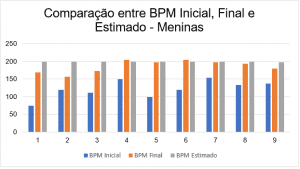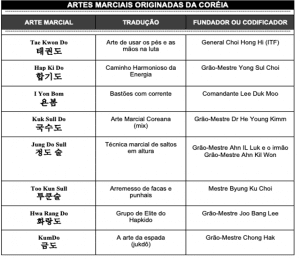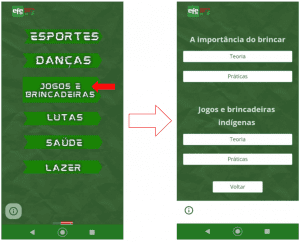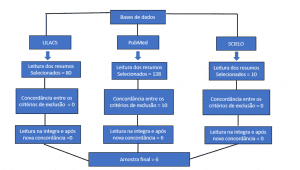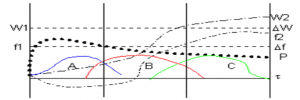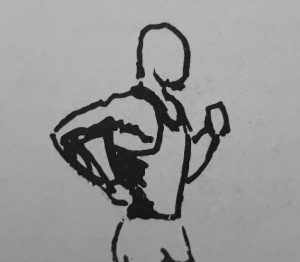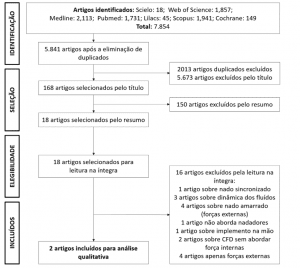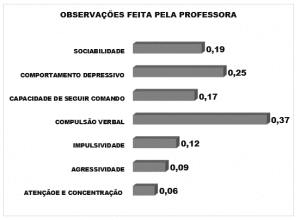LOPES, Jefferson Campos [1]
LOPES, Jefferson Campos. Karate as Olympic combat sport in 2020-Pan American Games Medalist until 2016. Multidisciplinary Core scientific journal of knowledge. 03 year, Ed. 06, vol. 04, pp. 130-139, June 2018. ISSN:2448-0959
Summary
This article aims to describe the trajectory of karate to input your 2020 Olympics in Tokyo/Japan. We will present through a literature review carried out on specific sites, articles and books, but also we will bring athletes who participated in the Pan American Games which is the competition that rates for the Olympic Games through this article We will show one of the most practical methods of combat that will be present in the biggest competition in the world.
Keywords: Karate, combat sports, the Pan American Games.
Introduction
Karate is one of the oldest and most popular sports in the world. Its origin is in Japan, particularly on Okinawa island, which is considered the cradle of your creation in the 20th century. The translation of the word karate, literally empty hands where represents a source martial art of the Orient with a philosophy and methodology of self-defense by rational use of parts of the whole body for defensive purpose[1]s.
So we can define the Karate as an extensive multicultural process evidenced by his constant transformations over time. His methodology for practice consists of three pillars which are: Kihon (Basics), Kata (Forms), and Kumite (fighting). In the competition are used the Kata that are certain sequences of attack and defense of various parts of the body against an imaginary enemy, already the Kumite are tactics and strategies where two opponents use semi contact techniques which must be touched in the regulated body in a scoring system where points 3 (Ippon) are granted to blows with his legs over his head and cleaning techniques and pitch, which results in the end for the opponent or fall of two puncture points (Waza-Ari) are judged for return to the trunk and punches in the back, including the back of the head and neck and finally, a point (Yuko) assigned to single arm punches to the head and body[2].
The score is effective when a technique is granted performed according to the following judging criteria: good shape, vigorous enforcement, attitude, awareness, good timing and correct distance.
And Karate evolution happens in the 90 many changes took the organizational field as a sport, and until 1996 there were two international federations, the World Union of karate Organizations (WUKO) and the International Traditional Karate Federation ( ITKF), with similar power and representation. This brought problems for this sports were recognized by the International Olympic Committee (IOC) as Olympic sport, which also had repercussions in the countries with regard to the dissemination of karate. With the merger of the WUKO and the ITKF, in 1996 the World Karate Federation (WKF), favouring the recognition of karate by the IOC, which would happen in 1999[3].
From the IOC influence on karate, began to occur several changes in the competition rules, which were making it less violent and enabling the reduction of the number of lesions, and also the severity of the same, in competitions and training[4].
Fighting sports
I would like first to speak about the definition of sports of combat detail that in the current context, terms such as fighting, martial arts, combat sports constantly are related to each other.
There is a great variety of fights, with movements, techniques and specific features. In addition, each mode with your origin and history, combines an institutionalizing based on rules that have been assimilated and transmitted between generations in different environments.
The term makes fight against a set of structured techniques for physical combat with unarmed or armed practitioners, targeting primarily, dispute, self-defense and physical development, without considering cultural philosophical issues[5].
In a broad sense, we have the situation where the said term is limited in the context of physical clashes/bodily subjugações intentions among the subjects from interpersonal conflicts and, invariably, by contradictory and human content ambivalent. "Martial art" to refer to a set of bodily practices that are configured from a notion here called "war" metaphor, since these practices are derived from the techniques of war as denotes the name, that is, (Mars martial Roman god of war; Ares to the Greeks)[6].
Already the term martial arts is more comprehensive and subjective, describing the use of techniques of educational character, structured didactic-pedagogical methods, targeting not only self-defense and physical conditioning, but considering philosophical aspects and spiritua[7]l.
In essence, the terms fighting and martial arts, feature, fundamentally, the character, the self that differs conceptually, is that the fight is aimed at dispute as order, while in the martial art, the fight becomes a means to achieve other goals[8].
More recently the term combat sport stands out as a modern conceptual adaptation front conventional standards of the sport. The term is often employed in order to institutionalize the confrontation between two opponents, based on rules.
The name of combat sports involves a setting of fights, martial arts and fighting systems organized in modern cultural manifestations, from the proposed institutions decodes sportsbook. Aspects and concepts such as competition, measurement, application of scientific concepts, results, rules and codified and institutionalised norms, income-maximizing body and a Rejoinder of corporal expression are some examples of this modern secular practices transposition of "combat". Therefore, it is necessary in this discussion, highlight that not really sought comes demarcating and featuring dialogue between the various protagonists that compose the historical scene representing the field of wrestling, martial arts and modalities combat sports[9].
In this way we will be showing below 2020 for the modalities of fighting sports that are already and can be played in the Olympics in Tokyo/Japan XXXII.
Table 1 – Table of Olympic combat sports ticket
| Sport | Year of entry | Categories | ||
| Demonstration | Effectively | Male | Female | |
| Boxing | – | 1904 | 1904 | – |
| Fencing | – | 1896 | 1896 | 1896 |
| Judo | 1964 | 1972 | 1964 | 1988 |
| Fight | – | 1896 | 1896 | 2004 |
| Taekwondo | 1988 | 2000 | 1988 | 2000 |
| Kung fu | 2008 | – | 2008 | 2008 |
| Karate | 2020 | – | – | – |
Picture adapted (BRAZILIAN OLYMPIC COMMITTEE 2004).
As is known, the Olympic medals tables in your overall achievements are awarded medals of gold/silver/bronze, where gold is the most valuable in the final calculation. The categories of the fights are distributed by male and female so presented second[10]. Creation of the frame by the authors.
Table 2-combat Modes in dispute in the categories
| Types of combat sports | Total up for grabs | Male | Female |
| Associated Wrestling Styles | 18 | 14 | 04 |
| Judo | 14 | 07 | 07 |
| Taekwondo | 08 | 04 | 04 |
| Fencing | 10 | 05 | 05 |
| Boxing | 13 | 10 | 03 |
| Karate | 08 | 04 | 04 |
Adapted from source: http://www.brasil2016.gov.br/pt-br/olimpiadas/medalhistas
Karate at the Pan American Games
The Pan American Games are a sporting event, held every four years, involving athletes from North America, South America and Central America. So the games are a multi sports event, which is based on the Olympic Games and are organized by ODEPA. Work as a version of the modern Olympic Games, in which involved only the countries of the American continent.
Karate has been included since the 1995 edition of the Pan American Games. Karate athletes (men and women) compete in the singles at the Pan American Games. The events are divided into male and female categories divided by the weight of the athletes.
Below we will present the Brazilian athletes since 1995 to 2015 medalists who have managed to rank at the Pan American games that are part of the elite of Brazilian Olympic sport.
Frame 03 – Brazilian medalists Athletes in combat sports in the games until 2016 Pan American Karate mode.
| Athlete name | Year | Country | Placing |
| José Gomes | 1995 | Argentina | Gold |
| Lara Oliveira | 1995 | Argentina | Silver |
| Team Kumite-men. | 1995 | Argentina | Silver |
| Team Kumite-Wom. | 1995 | Argentina | Silver |
| Gamila Ribeiro | 1999 | Canada | Gold |
| Maria Cecília | 1999 | Canada | Silver |
| Antonio C. Pinto | 1999 | Canada | Silver |
| Nelson Bandyopadhyay | 1999 | Canada | Silver |
| Altamiro Cruz | 1999 | Canada | Silver |
| Kenneth de Souza | 1999 | Canada | Bronze |
| Celio Vieira | 1999 | Canada | Bronze |
| Massimiliano Pagano | 1999 | Canada | Bronze |
| Gamila Ribeiro | 2003 | Dominican Republic | Gold |
| Nelson Sandenberg | 2003 | Dominican Republic | Silver |
| Emmanuel Santana | 2003 | Dominican Republic | Bronze |
| Kenneth de Souza | 2003 | Dominican Republic | Bronze |
| Jurandir Andrade | 2003 | Dominican Republic | Bronze |
| Cynthia Lassalvia | 2003 | Dominican Republic | Bronze |
| Lucélia Ribeiro | 2007 | Brazil | Gold |
| Juarez Santos | 2007 | Brazil | Gold |
| Valeria Kumizaki | 2007 | Brazil | Silver |
| Carlos Lourenço | 2007 | Brazil | Silver |
| Vinicius de Souza | 2007 | Brazil | Bronze |
| Nelson Sandenberg | 2007 | Brazil | Bronze |
| Douglas Broser | 2007 | Brazil | Bronze |
| Lucélia Ribeiro | 2011 | Mexico | Gold |
| Douglas Broser | 2011 | Mexico | Bronze |
| Jessica Candido | 2011 | Mexico | Bronze |
| Wellington Barbosa | 2011 | Mexico | Bronze |
| Valeria Kumizaki | 2011 | Mexico | Bronze |
| Douglas Broser | 2015 | Canada | Gold |
| Valeria Kumizaki | 2015 | Canada | Gold |
| Natalia Brozullato | 2015 | Canada | Gold |
| Aline de Souza | 2015 | Canada | Bronze |
| Isabella Santos | 2015 | Canada | Bronze |
Source: COB-2016 https://www.cob.org.br/
Materials and methods
The study was based on a bibliographical review on search tools, Capes Journals and Google Scholar. To search effect were considered publications produced in a period of 10 years. It was deemed that time important in view of the evolution of the studies in the area; However, some classical references, prior to this period, were also included on the basis of relevance with the theme of the study. Initially the following English descriptors were used: Karate; martialarts (martial arts). As a selection criterion, such descriptors have been associated with other descriptors in order to broaden the relationship between combat sports and karate. Thus, met the criteria of the selection process, were granted a total of 35 articles who attended all the inclusion criteria, which will be used in this review.
Results and discussion
In this research we found productions check and analyze which of 35 items were divided as follows:

Within these productions we can check which usually searches are related as the conceptual part which involves the topics fights, martial arts and combat sports. In productions about Karate found in most research in school and training area. Not found any research that would make the relationship between the Pan American Games and the sport of Karate.
Conclusions
Based on the bibliographical effected was possible to analyze the academic production of the international journals on physical education on the subject of terminology of combat sports in the context of sports culture, from the which identified a significant precariousness restrictive of scientific knowledge in the quantitative and qualitative dimensions of research. We note the presence of a few research of applied from the point of view of professional and cultural intervention about the sports of combat.
The Group of Fights at the Olympic Games of antiquity was formed to Fight, Sparring and the Pankration (mixture of sparring and fighting). The fight was systematized and sprouted to Greco-Roman wrestling and freestyle wrestling. The Sparring came the current Boxing. Both of these methods of combat (Greco-Roman wrestling, freestyle wrestling and boxing) are part of the program of the modern games. The Pankration influenced several contemporary forms of struggle, among them the Vale Tudo, also known as Martial Arts Mix (Mixed Martial Arts-MMA).
As noted, in many Greeks influenced the modern Olympic Games. The principles of modern athletics "faster, higher and stronger" ("citius, altius and fortius"), concerning the acts of running, jumping and throwing, were instituted in 1896, but the philosophy contained in this motto is present from 776 to c. when young people and Greek soldiers, competed in the quest for Olympic glory.
Thus we see that the fights have evolved for combat sports, where today are forms of disputes with rules that were turned to the modern games where they are included in the Olympics. These competitions bring a special attraction for media as well as a projection of the modalities on the world stage, where athletes end up becoming heroes and turn their lives and serve as examples to others.
What we realize is that the combat sports brought in the whole history of the Olympic Games, about 22% of the total medals won by Brazilian athletes (gold, silver and bronze) where this percentage come from the combat sports, being that of total Brazil's gold medals 13% came from our fighters and the Judo as greater conqueror of results.
So there is a growing success is necessary for the investment of these resources in six actions, under which the COB ruled that: "fostering [1]programs and projects" are candidates for international events, purchase of equipment and materials, administration of units as centers, Museum and Olympic Academy; "maintaining th[2]e entity" is the administrative maintenance of the COB and Brazilian confederations; "traini[3]ng" is the completion and participation in technical events and the formation of skilled labor in the sport; "technical preparati[4]ons" is the training, infrastructure, hiring and remuneration of technical committees; "maintenance of athletes[5]" is the payment of various expenses of training and national and international competitions; and "organisation of[6] and participation in sporting events" is the completion and participation in training and competitions nationally and internationally[11].
So the transition from amateurism to professionalism in the Olympic movement, which is evidenced today within the professional sports and production, will only be possible from strong financial investment and the glimpse of proportional return. This is where we see the development of the media as essential to enable financial return to investors and enable so the professionalization of sports[12].
Finally, without reducionismos we suggest putting a reflective-critical approach of the academic and professional point of view by multiple agents to streamline and reconfigure cultural and body manifestations of the movement, more specifically those related to sports of combat.
References
[1] STRICEVIC, M. Karate[Karate. In Serbian.]. Banja Luka: Vrbas CFK; 1997.
[2] World Karate Federation (WKF). New kata and kumite rules;[version 8.0; online] 2015, cited; Available from:% 20RULES% 1% 20EFFECTIVE% 207.6/23/2017.
[3] WORLD KARATE FEDERATION (WKF). Available at: accessed on 23 June 2017.
[4] MACAN, J.; BUNDALO-VRBANAC, D.; ROMI ' C, g. Effects of the new karate rules on the incidence and distribution of injuries. British Journalof Sports Medicine, London, v. 40, p. 326-30, 2006.
[5] MOCARZEL, r. c. s. martial arts and youth: violence or educational values? A case study of a kung-fu style. Dissertation submitted in the course of master in physical activity Sciences from Universidade Salgado de Oliveira. Niterói-Rio de Janeiro, 2011.
[6] FRANCHINI, E.; TAKITO, M.Y.; RAO, F.B.; MANOEL, E.J. considerations for inclusion of motor activities typical of martial arts in a Physical education program. Proceedings of the II Congress of scientific initiation of School Physical education from the University of São Paulo, 1996. p. 65-69.
[7] P, LEANDRO. Clinical look at the fights, martial arts and combat disciplines. -1 Ed. Manaus: OMP Publisher, 2015.
[8] PUCINELI, f. a. about fighting, martial art and combat sport: dialogue. Universidade estadual de campinas, Faculty of physical education, 2004.
[9] DEL VECCHIO, F. B.; FRANCHINI, e. Fights, martial arts and combat sports: possibilities, experiences and approaches in the physical education curriculum. In: SAMUEL DE SOUZA NETO; DAGMAR HUNGER (Org.). Vocational training in physical education: studies and researches. Rio Claro: Biblioética, 2006, v. 1, p. 99-108.
[10] FRANCHINI, AND. The methods of combat in the modern Olympic Games. Available at: <http: olympicstudies.uab.es/brasil/pdf/79.pdf="">accessed on 23 May 2017.</http:>
[11] THE BRAZILIAN OLYMPIC COMMITTEE. 2007 status. Rio de Janeiro: COB. 2008.
[12] BOURDIEU, p. program to a sociology of sport. In: Things Said. São Paulo: Brasiliense, 2004.
[1] Doctorate in Sport Science-UTAD-PORTUGAL. Doctor of Martial Arts (Honorius cause FACEI/2015). Master's degree in education (Unimonte-2001). Master in Martial Arts (Honorius cause FACEI/2013). Post-graduated in Cooperative Games (Unimonte-2001). Graduation in sports and physical activities for the disabled (UFJF) and Educational public management (UNIFESP). MBA in Fights (COB-2015). Degree in physical education at Centro Universitário Monte Serrat (2000). Degree in business administration from Centro Universitário Monte Serrat (1990). Graduated in tourism (Unaerp-2008). Course in sports administration (COB/2016)

